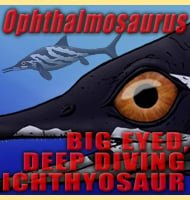In Depth
Malawisuchus is a genus of ziphosuchian crocodylomorph that lived in Africa during the early Cretaceous. Malawisuchus has a number of interesting features, including mammal-like teeth which may have been used for processing tough plants, and muscle attachment points on the hip and rear limbs which suggest that Malawisuchus may have been able to walk upright and even run. Malawisuchus also shows forelimb development which suggests a powerful digging ability, and in extension to this, remains of Malawisuchus have been located in what were once burrows.
Malawisuchus should not be confused with Malawisaurus, a dinosaur also known from Malawi.
Further Reading
- A crocodyliform from the Early Cretaceous Dinosaur Beds, northern Malawi. - Journal of Vertebrate Paleontology 17(2):280-294. - E. M. Gomani - 1997.










